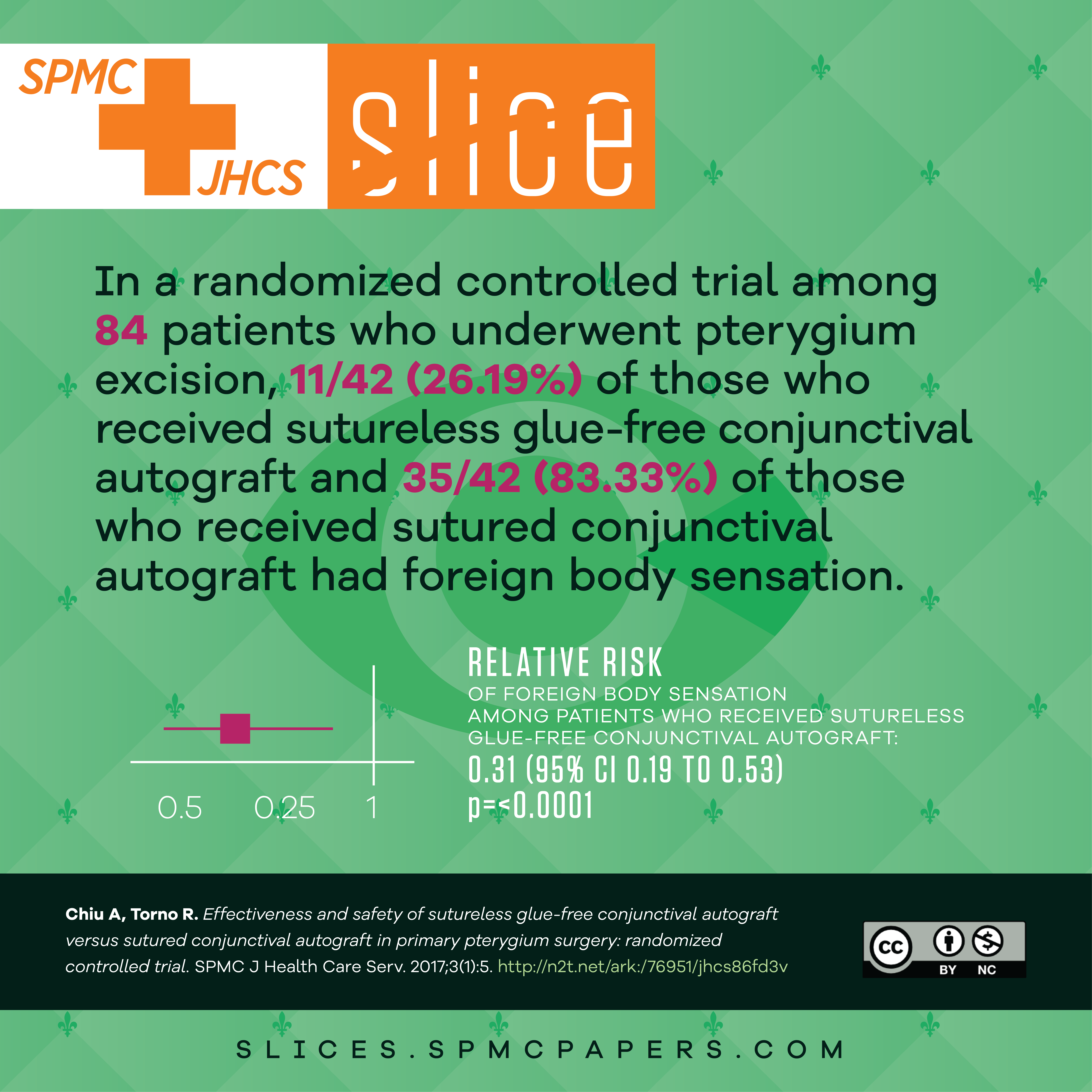Introducing: slices
SPMC J Health Care Serv. 2018;4(1):4 ARK: https://n2t.net/ark:/76951/jhcs82y2gg
1Hospital Research and Publication Office, Southern Philippines Medical Center, JP Laurel Ave, Davao City, Philippines
Correspondence Alvin S Concha, alvinconcha@gmail.com
Received 18 June 2018
Accepted 19 July 2018
Cite as Concha AS. Introducing: slices. SPMC J Health Care Serv. 2017;4(1):4. https://n2t.net/ark:/76951/jhcs82y2gg

|
|
Figure 1 Components of a “slice" from an article in Southern Philippines Medical Center Journal of Health Care Services (SPMC JHCS). |
Article source
Submitted
Peer review
Internal
Competing interests
None declared
Access and license
This is an Open Access article licensed under the Creative Commons Attribution-NonCommercial 4.0 International License, which allows others to share and adapt the work, provided that derivative works bear appropriate citation to this original work and are not used for commercial purposes. To view a copy of this license, visit https://creativecommons.org/licenses/by-nc/4.0/
References
1. Smith R. The trouble with medical journals. Journal of the Royal Society of Medicine. 2006;99(3):115–119.
2. Ely JW, Osheroff JA, Gorman PN, Ebell MH, Chambliss ML, Pifer EA, Stavri PZ. A taxonomy of generic clinical questions: classification study. BMJ. 2000 Aug 12;321(7258):429-32.
3. Lai N. Evidence Based Medicine Series: Asking Focused Answerable Clinical Questions. Malaysian Family Physician: The Official Journal of the Academy of Family Physicians of Malaysia. 2009;4(1):23–25.
4. Evidence-Based Practice in Health [Internet]. Bruce: University of Canberra. c2018 [cited 2018 July 19]. Available from: https://canberra.libguides.com/c.php?g=599346&p=4149722
5. Gajović S, Svalastog AL. When communicating health-related knowledge, beware of the black holes of the knowledge landscapes geography. Croatian Medical Journal. 2016;57(5):504–509.
6. Humphreys L, Pape TV, Karnowski V. Evolving mobile media: Uses and conceptualizations of the mobile internet. J Comput Mediat Commun. 2013;18:491-507.
7. Westerman D, Spence PR, Van Der Heide B. Social media as information source: Recency of updates and credibility of information. J Comput Mediat Commun. 2013;19(2):171-183.
8. Richardson WS, Wilson MC, Nishikawa J, Hayward RS. The well-built clinical question: a key to evidence-based decisions. ACP J Club. 1995 Nov-Dec;123(3):A12-3.

This work is licensed under a Creative Commons Attribution-NonCommercial 4.0 International License.
Authors who publish with this journal agree to the following terms:
- Authors retain copyright and grant the journal right of first publication with the work simultaneously licensed under a Creative Commons Attribution-NonCommercial 4.0 International License that allows others to share the work for non-commercial purposes with an acknowledgement of the work's authorship and initial publication in this journal.
- Authors are able to enter into separate, additional, non-commercial contractual arrangements for the non-exclusive distribution of the journal's published version of the work (e.g., post it to an institutional repository or publish it in a book), with an acknowledgement of its initial publication in this journal.
- Authors grant the journal permission to rewrite, edit, modify, store and/or publish the submission in any medium or format a version or abstract forming part thereof, all associated supplemental materials, and subsequent errata, if necessary, in a publicly available publication or database.
- Authors warrant that the submission is original with the authors and does not infringe or transfer any copyright or violate any other right of any third parties.
